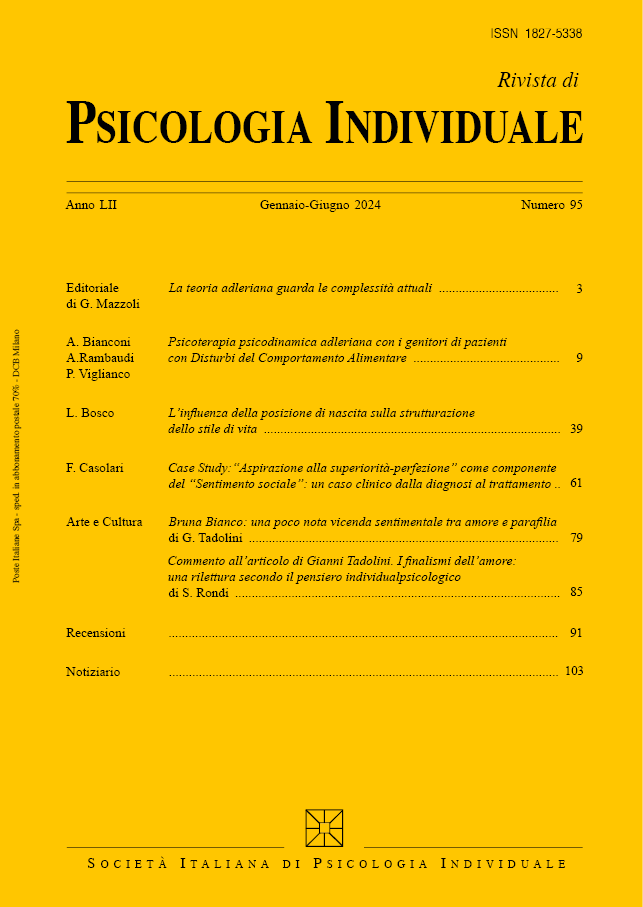Il disturbo psicosomatico e l'approccio individual-psicologico
Parole chiave:
somatizzazione, mente, corpo, olismo, psicosomatica, simbolo, sintomo, conflittoAbstract
Il testo analizza il disturbo psicosomatico attraverso l’approccio individual-psicologico adleriano, evidenziando la stretta interazione tra fattori emotivi e manifestazioni organiche. A partire dagli anni ’40, la medicina ha progressivamente riconosciuto il legame tra processi psicologici e fisiologici, favorendo una visione integrata della malattia. La psicosomatica si è affermata come disciplina volta a esplorare i meccanismi attraverso cui emozioni e conflitti interiori si traducono in sintomi corporei. La psicoanalisi ha contribuito con ipotesi sul significato simbolico del sintomo e sulla tipologia personologica del paziente psicosomatico, delineando tratti quali un Io fragile, difese immature, inibizione della simbolizzazione e tendenza all’azione impulsiva. In questi soggetti, il pensiero pragmatico-operativo prevale sull’elaborazione mentale, e la somatizzazione rappresenta una regressione a modalità infantili di comunicazione emotiva. L’approccio adleriano propone una lettura olistica del sintomo, concependo l’individuo come unità psicofisica inserita in un sistema relazionale. Ogni sintomo corporeo è espressione di un progetto esistenziale e riflette esperienze pregresse. Secondo Adler, corpo e mente cooperano in modo indivisibile, e ogni manifestazione somatica rivela scopi e contenuti emotivi, spesso inconsapevoli. Il sentimento sociale, fondamentale per l’adattamento umano, è considerato innato e sostenuto da meccanismi ambientali stabili, come il piacere derivante dalle effusioni materne. Questo sentimento favorisce l’aggregazione e la coesione sociale. Nel caso dell’ipertensione, il sintomo è interpretato come espressione di un conflitto tra autoaffermazione e dipendenza. Il soggetto iperteso manifesta ostilità, insicurezza, difficoltà relazionali e alessitimia. In chiave adleriana, l’ipertensione riflette una volontà di potenza che prevale sul sentimento sociale, generando tensione e disequilibrio. La terapia deve quindi considerare il sintomo all’interno dello stile di vita e della storia personale del paziente






